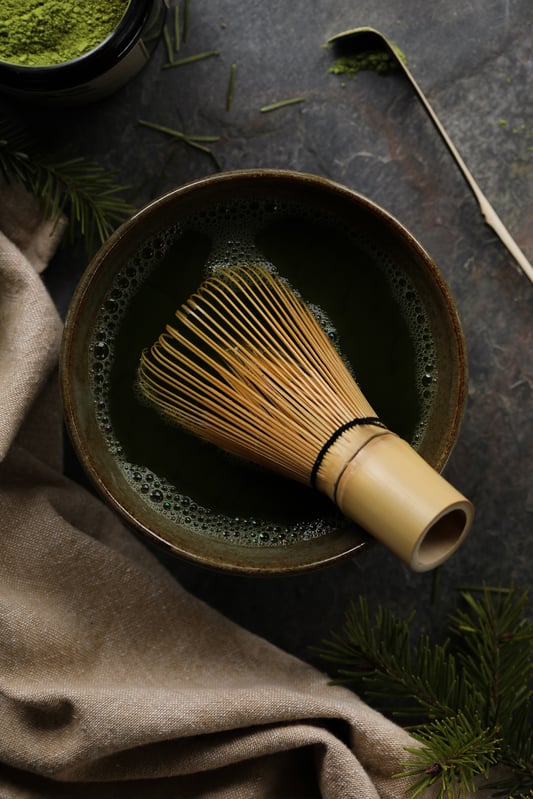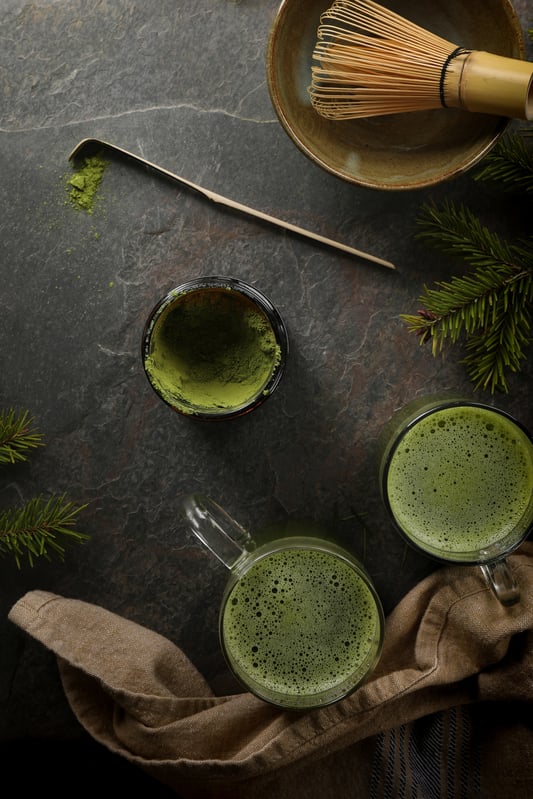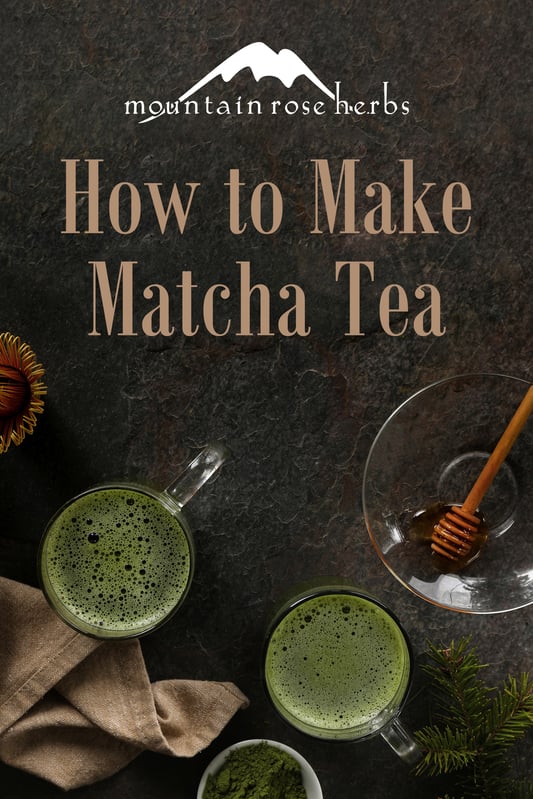Matcha tea is trending everywhere, from tantalizing treats such as cheesecake, lattés, and buttery shortbread, to skin nourishing facial masks and scrubs. What once started as a traditional cup of ceremonial tea has now become a cross-cultural phenomenon. Matcha is made from finely powdered, high-quality green tea leaves, and its healthful benefits, paired with its rich, earthy flavor, make it an intriguing addition to almost any kind of recipe.
When you drink organic ceremonial matcha, you consume the entire green tea leaf, which is alive with nutrients and a nice kick of caffeine. Whether whisked hot in the traditional preparation or poured over ice with milk and honey, matcha offers a truly remarkable sipping experience.
The word matcha is a conjunction of the words matsu (to rub) and cha (tea). The Japanese word cha came from the Mandarin Chinese word chá, both meaning tea. Matcha is produced by taking the most tender young green tea leaves, drying them, and then slowly grinding the leaves using a stone wheel. This revered tea has been prepared, served, and enjoyed during traditional tea ceremonies in Japan for centuries.
The Traditional Matcha Tea Ceremony
Widely practiced tea ceremonies began to take shape in Japan during the 13th century; before that time, tea was reserved mainly for religious rituals. An informal tea ceremony typically begins by serving sweets before the tea, which is brewed and served with slow and intentional movements (serving confections first helps offset the bitterness of the matcha). There are also more formal tea ceremonies held with multi-course meals that can last up to four hours!
PARts of a Traditional Matcha Tea Serving Set
A nice set of matcha brewing tools can heighten the experience of enjoying matcha, whether you're preparing it for others or just for yourself. The traditional tools for brewing a perfect cup of matcha include:
- Natsume, a container often made of wood or porcelain with a secure lid designed to keep the matcha tea powder fresh and dry until the time of preparation
- Chasen, a matcha whisk designed to combine the matcha powder with water to create tea with creamy, frothy consistency
- Chawan, a tea bowl often made of ceramic in which the matcha powder is combined with water and whisked with the chasen
- Chashaku, a bamboo scoop used to measure out and transfer the matcha powder from the natsume to the chawan
How to Make Matcha Tea
Directions
- Heat 10 ounces of water until it is just barely boiling.
- Scoop 1 to 3 teaspoons of organic matcha powder into your bowl.
- Carefully pour a small amount of hot water over the tea powder and use the bamboo whisk to start blending.
- Add more water gradually and continue to whisk until a froth appears on the surface of the tea.
- Pour into cups to serve, savor, and enjoy!
Optional: You can also sift the matcha powder before brewing with a mesh strainer for an extra smooth cup, though this is not necessary unless your tea has absorbed some moisture and begun to clump.
Making Matcha Tea Without a Whisk
If you don’t have a matcha whisk available, any old whisk will do the trick. Slowly adding water to the matcha powder as you mix will help to create a smooth cup each time.
Though certainly not as refined of a process, you may also make matcha tea in a lidded jar if you don’t have a whisk available. I scoop my matcha powder into the jar, pour my water or milk over, twist on the lid, and shake it up until the powder is thoroughly blended. This works well for a cold or lukewarm beverage, though caution is recommended with hot water, since shaking it with a lid on will create pressure and a potential mess when the lid is removed.
Want to Explore More Traditional Beverages?
Try This Traditional Mexican Hot Chocolate Recipe!
You might also enjoy:
- Herbal Chocolate Bars with Coconut and Almond Butter
- Natural K-Beauty Tips & Propolis Moisturizer Recipe
- Golden Milk and Traditional Spicy Chai Recipes













